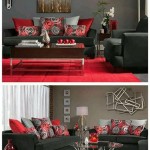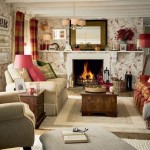Living Room Dining Room Combo Decorating Ideas
Combining a living room and dining room into a single space is a popular choice for homeowners seeking to maximize space and create a seamless flow. This approach can be especially beneficial in smaller homes or apartments, where distinct rooms are limited. However, decorating a combined living and dining space effectively requires careful planning to create separate yet harmonious zones that serve both functions without feeling cramped or cluttered.
Defining the Zones
The first step in decorating a combined living and dining room is to define the distinct areas. This can be achieved through visual cues such as flooring, rugs, lighting, and furniture arrangement. Utilizing different flooring materials, such as hardwood in the living room and tiles in the dining area, can create a clear separation. A rug placed beneath the dining table can further demarcate the dining zone. Lighting plays a crucial role as well, with overhead pendants or chandeliers illuminating the dining table and recessed lighting or floor lamps providing ambient light in the living area.
Furniture placement also plays a vital role in defining the zones. Consider arranging the seating in the living room to face the dining table, creating a sense of visual connection between the two areas. However, avoid placing the sofa or armchairs directly behind the dining table to maintain a comfortable flow of movement. A console table or a low bookcase can act as a visual divider between the living and dining areas while providing additional storage space.
Choosing the Right Furniture
Selecting the right furniture is essential for creating a functional and aesthetically pleasing combined living and dining space. Opt for multi-functional pieces that serve both areas effectively. For instance, a sofa with built-in storage can provide extra seating and storage solutions for the living room, while a dining table with leaves can be expanded to accommodate larger gatherings. Consider incorporating a bar cart or a sideboard that can be used for serving drinks and snacks in the dining area and showcasing decorative items in the living room.
The size and shape of the furniture need to be carefully considered. Choose pieces that are proportionate to the combined space, avoiding oversized pieces that could overwhelm the room. Consider using furniture with open frames or legs to create a sense of openness and airiness. Glass-topped tables and chairs with a lightweight design can also add to the feeling of spaciousness.
Color and Texture
Color and texture play a crucial role in creating a cohesive look and feel in a combined living and dining room. A neutral color palette can create a sense of calm and spaciousness, while pops of color can be introduced through throw pillows, artwork, or accessories to add visual interest. Texture can be incorporated through rugs, curtains, and upholstery fabrics. A textured rug can visually ground the dining area, while soft velvet curtains can provide a luxurious feel in the living room.
Consider using wallpaper in one of the zones for a touch of personality and pattern. A bold wallpaper in the dining room can create a focal point, while a more subtle pattern in the living room can add depth and interest. Alternatively, using a single color with different textures on the walls can create a visually appealing contrast.
Lighting Strategy
Lighting is essential for creating a functional and inviting atmosphere in a combined living and dining space. A combination of ambient, task, and accent lighting can be used to highlight different areas and create distinct moods. Overhead lighting, such as recessed lights or a ceiling fixture, can provide general illumination for the entire space. Task lighting, such as pendant lights over the dining table or track lighting, can be used to provide focused illumination for specific activities.
Accent lighting, such as table lamps or sconces, can be used to highlight artwork or create a warm and inviting ambiance. Using dimmers for the lighting fixtures allows you to adjust the lighting levels based on the time of day and activity.
Incorporate Personal Style
Ultimately, the key to decorating a combined living and dining room is to incorporate your personal style. Express your personality through artwork, accessories, and decorative elements that reflect your tastes and interests. Whether you prefer a contemporary, traditional, or eclectic aesthetic, ensure that the chosen decor complements the overall space and creates a harmonious and inviting atmosphere.

Living Room And Dining Design Ideas Designcafe

Living Room Dining Combo Ideas With Tricks Doğtaş

Living Room Dining Combo Ideas With Tricks Doğtaş

Living Room And Dining Design Ideas Designcafe

Living And Dining Room Combo With 5 Ilrated Floor Plans Roomlay

Combining Living Dining Areas 6 Tips For A Seamless Transition

5 Tips For Decorating A Combined Living Dining Room Happily Ever After Etc

Living Room Dining Combo Ideas With Tricks Doğtaş

90 Minute Interior Design Consultation From Designed To 50 Off Living Room Dining Combo Small Apartment

Get The Ideal Rectangle Living Room Dining Combo Now
Related Posts







